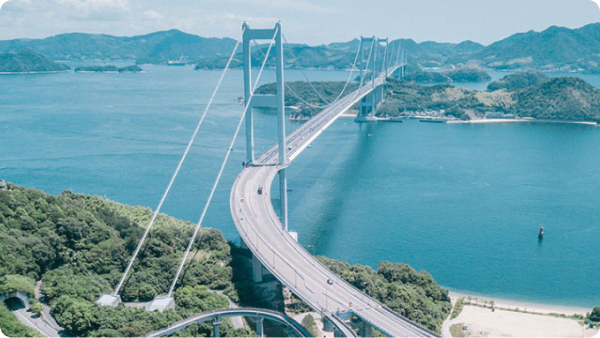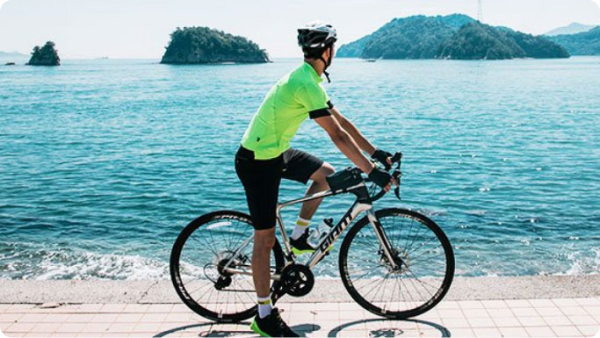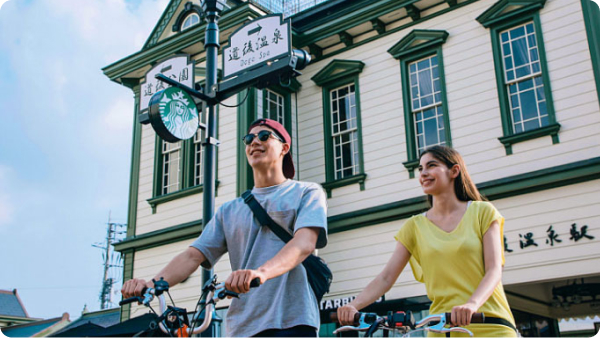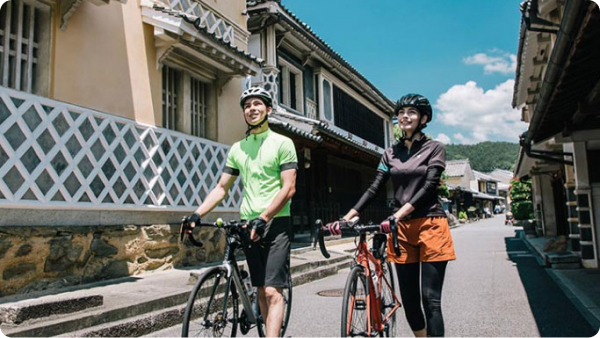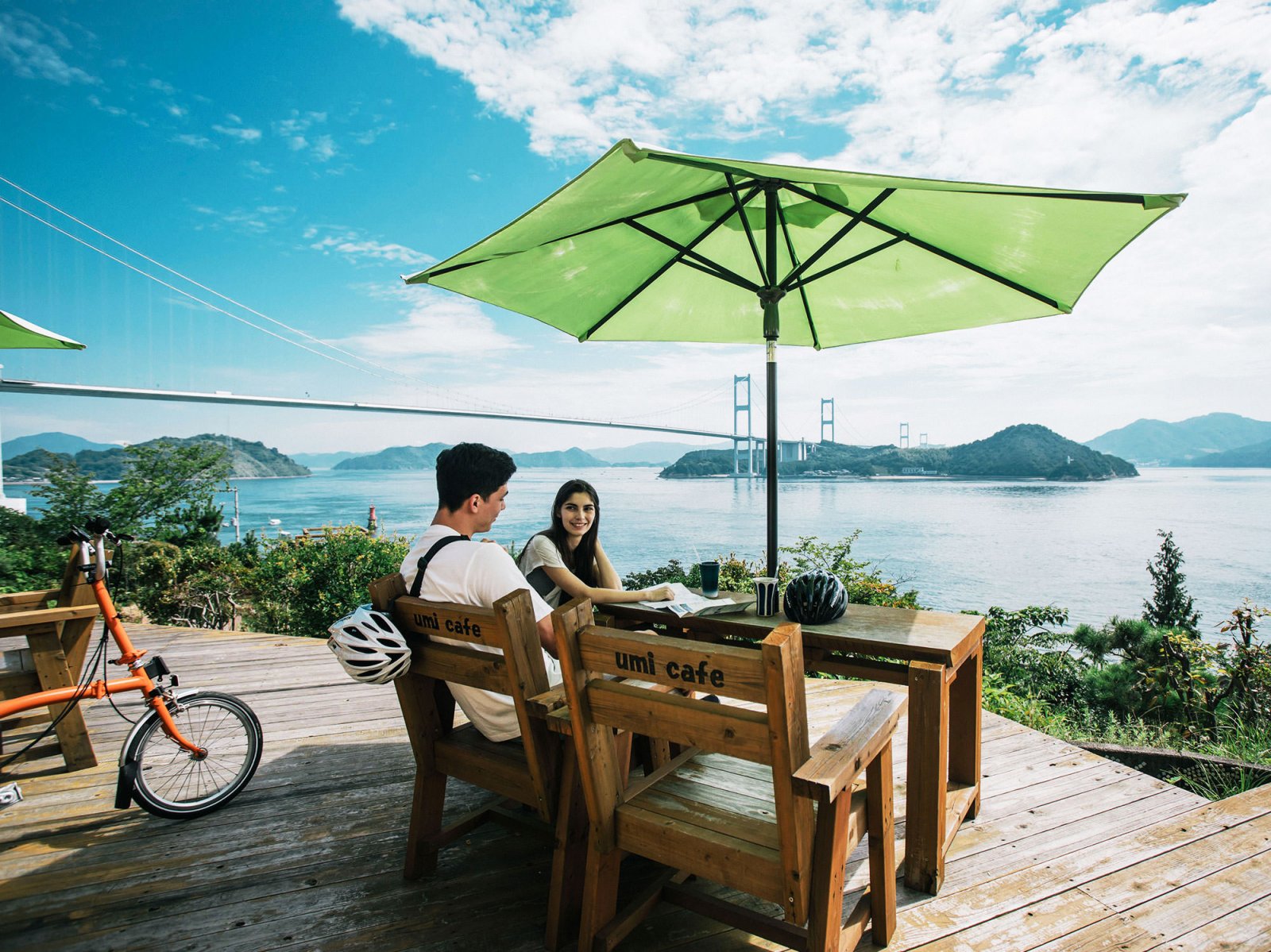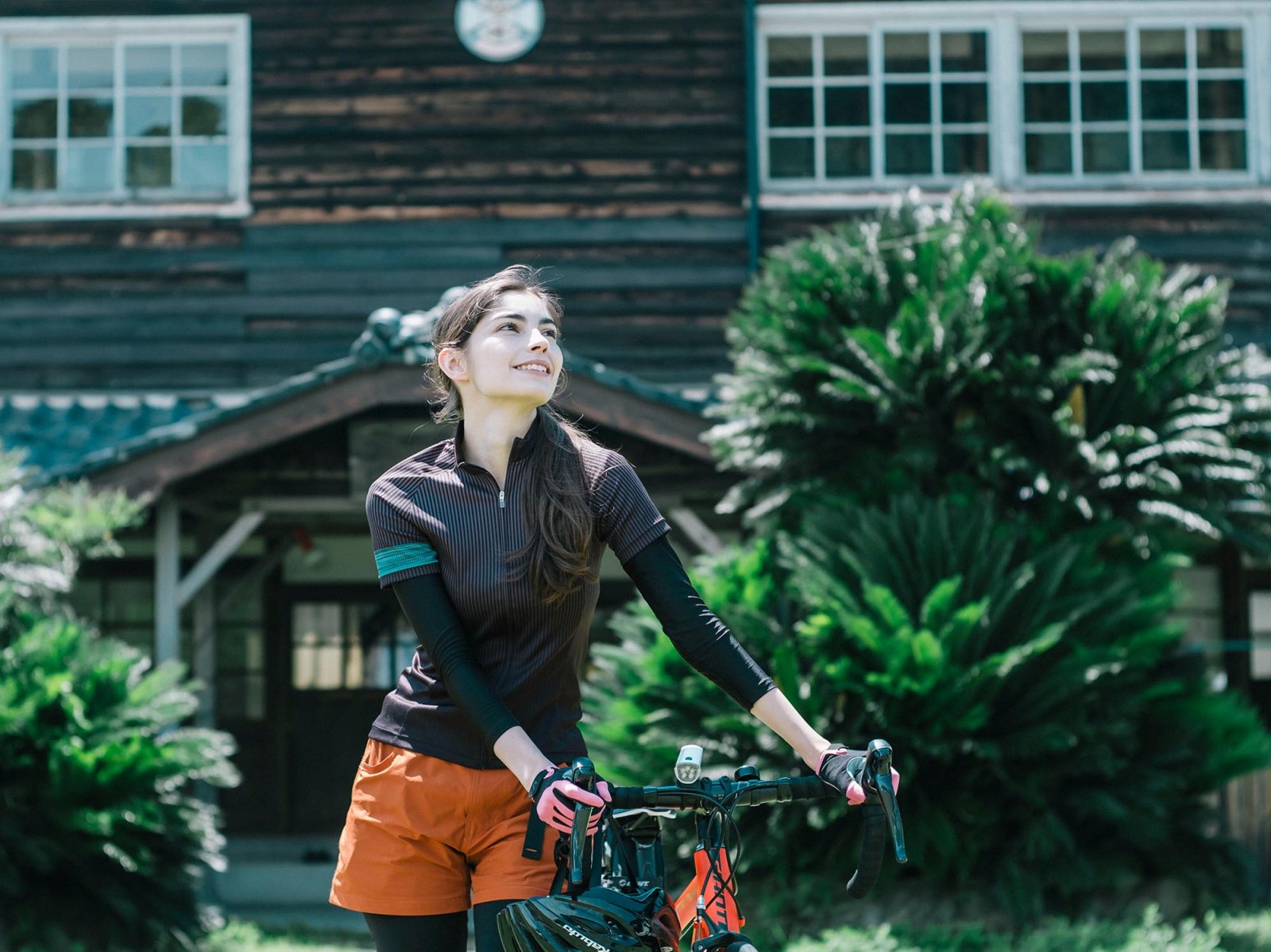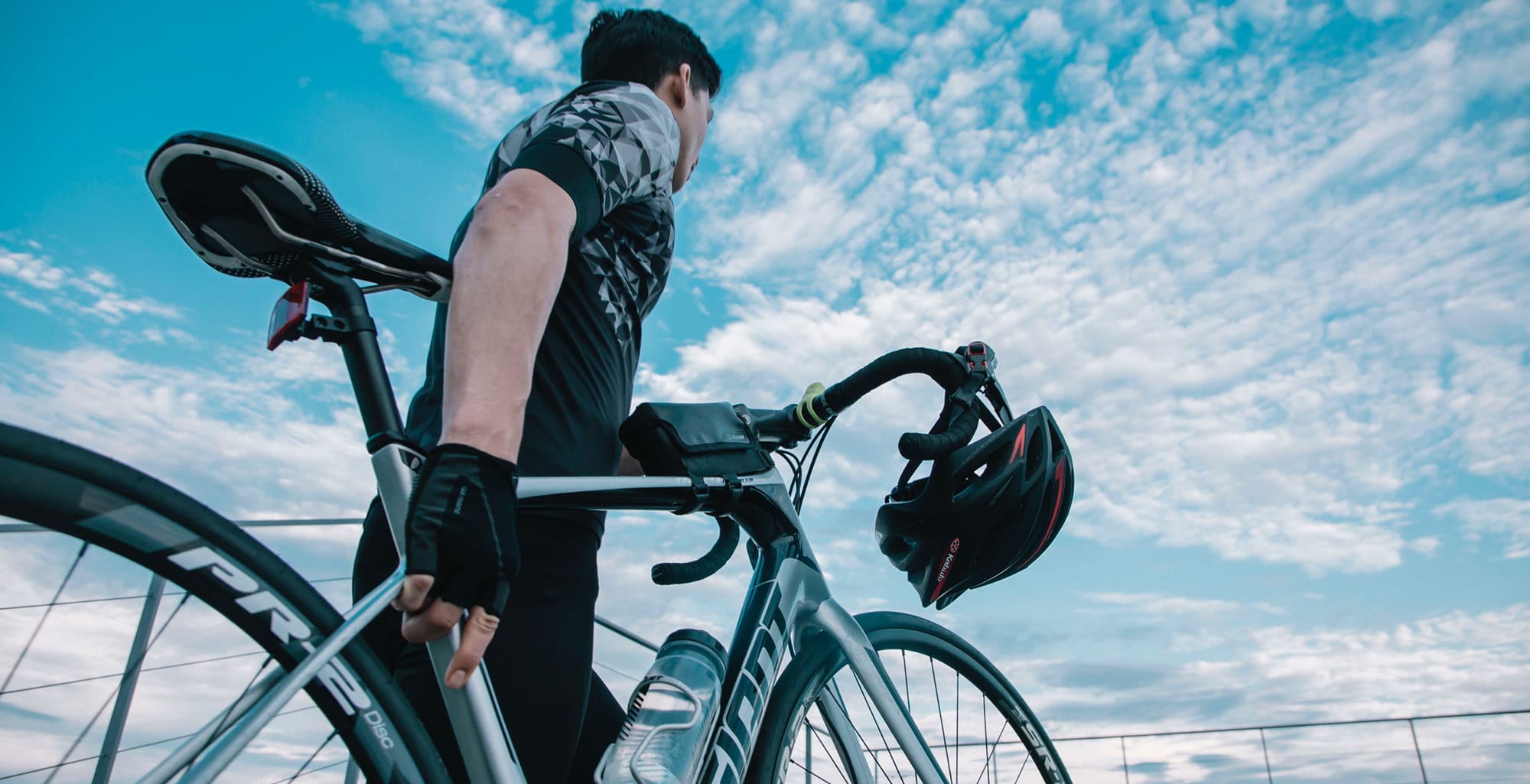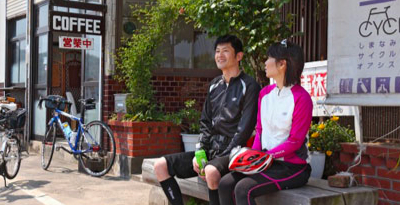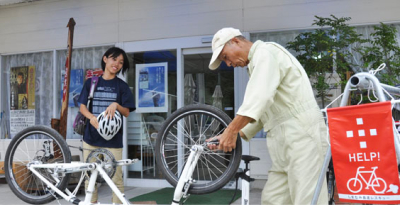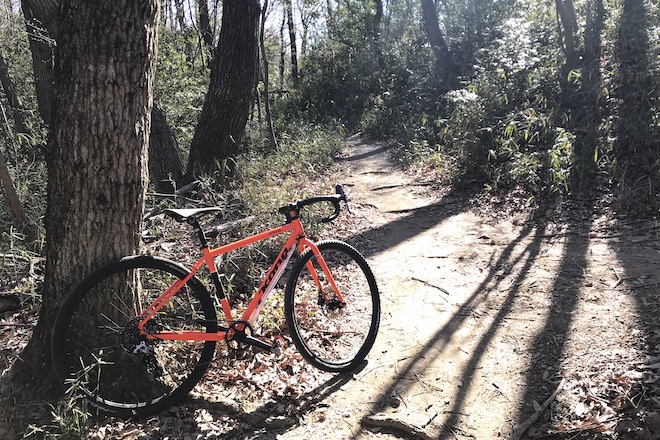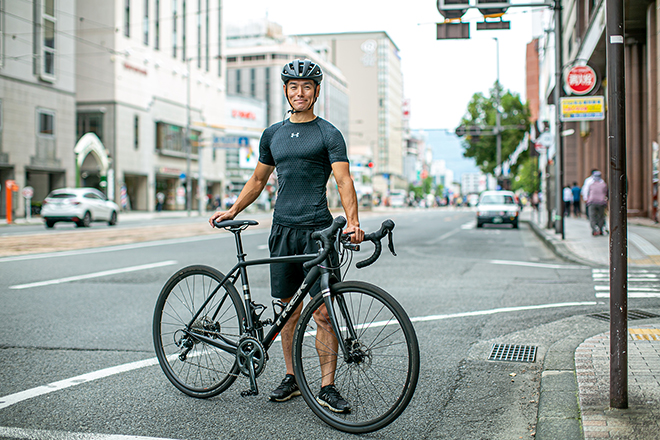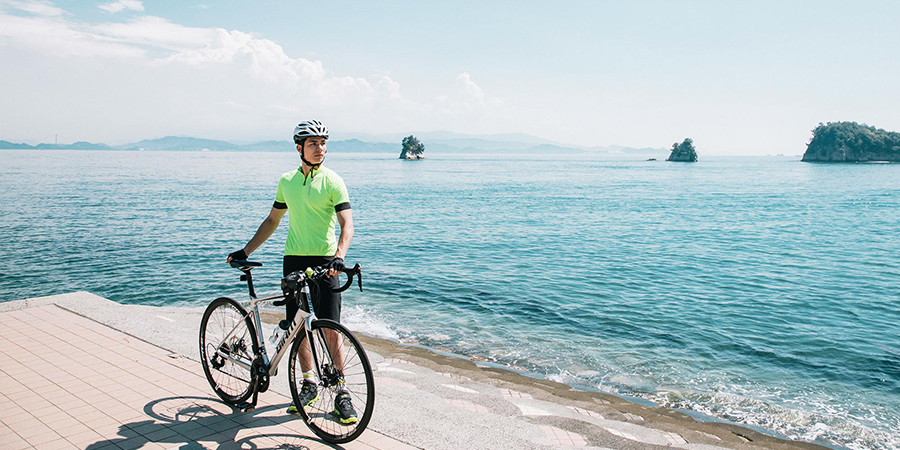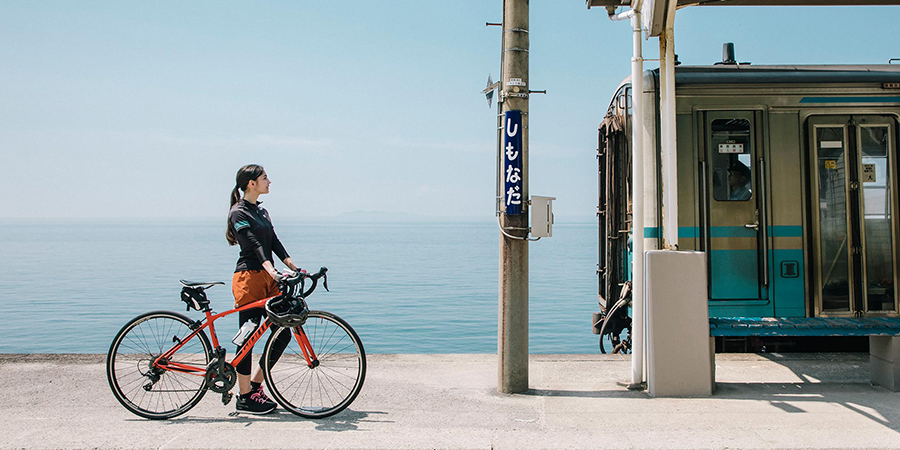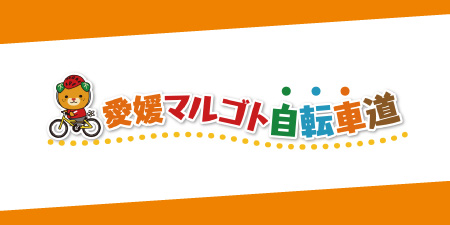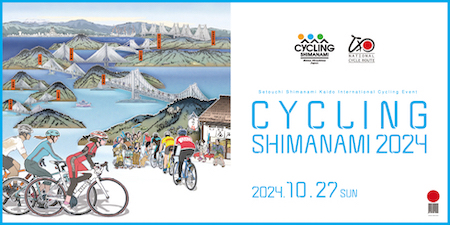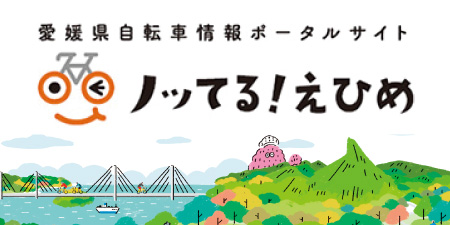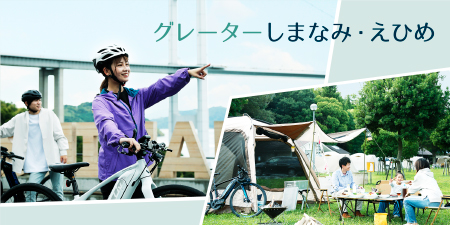What are the Recommended Dining Options
for Cyclists in Ehime?
We Asked Japan’s Leading Sports Nutritionist!
What are the Recommended Dining Options for Cyclists in Ehime? We Asked Japan’s Leading Sports Nutritionist!
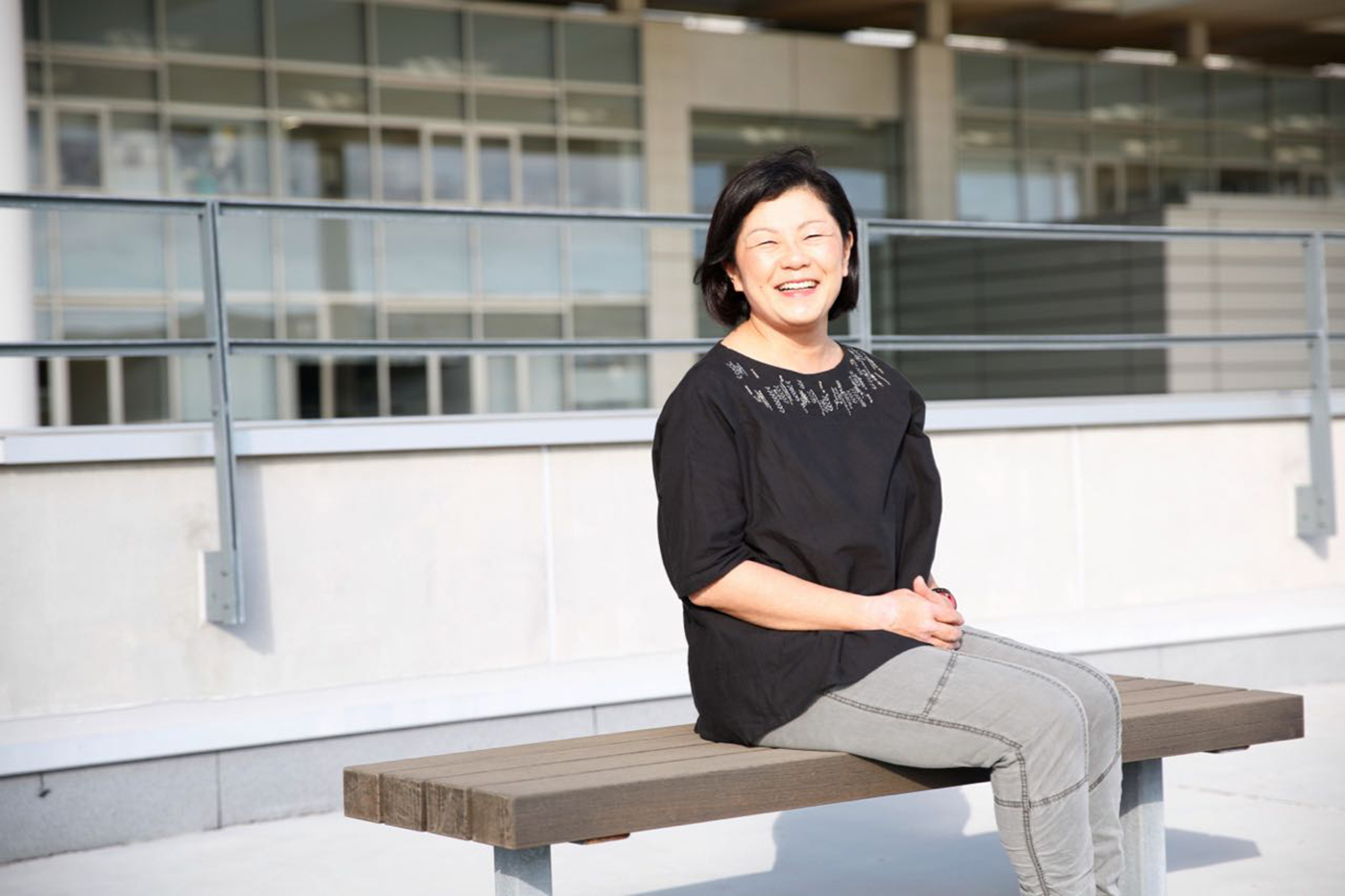
Obtaining enough nutrition and energy is essential for cyclists on their long rides. Depending on the type of bicycle, riders are said to consume about 700 kcal per hour over a ride distance of 20 to 30 km on average. Without proper awareness, it is even possible to experience the well known “hunger knock” phenomena caused by low blood sugar.
Professor Shihoko Suzuki of Kanagawa University of Human Services, a pioneer in nutritional and food support for athletes, uses her sports nutrition management expertise to provide support to numerous athletes such as the Japan women’s softball team at the Beijing Olympics, the Mazda Motor track & field team, and the Japan men’s wheelchair basketball team. She also supports such bicycle racing athletes as Ayako Nakai, the winner of U-23 Japan Championship, and her brother Kota Nakai.
So, what sort of nutrition to cyclists need? When we asked Suzuki-san that question, her curt reply was that “You misunderstand nutrition!”. What does she mean by that? We asked Suzuki-san, who visits Ehime every year, which Ehime cuisine options are recommended for cyclists.
Rather than “what?”, the question is who should eat what, how, where, and when.
– When one thinks of cyclists, one typically assumes it is important to consume sugar for energy and protein for muscle strength. What food do you recommend the most?
Suzuki: With a sigh, Suzuki-san replies, “Not surprisingly, you have a simplistic understanding.”
– What do you mean?
Suzuki: When it comes to nutritional advice, people typically expect it to be much like a medicinal prescription, such as “take this” or “avoid that”. But the fundamental approach of sports nutrition is to eat a certain way depending on a particular lifestyle and type of training within it.
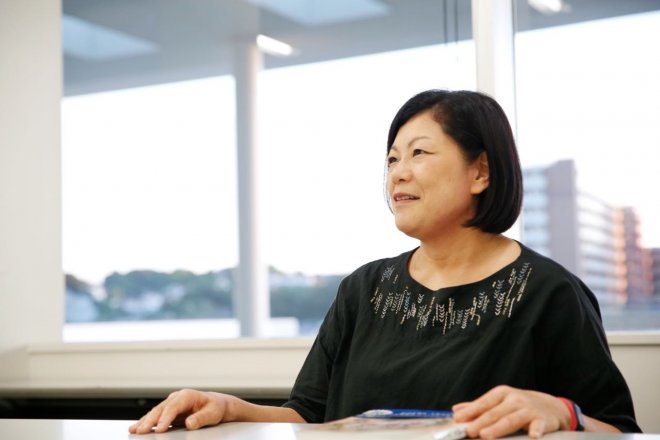
Shihoko Suzuki
Suzuki: For example, if you plan to start your practice from 13:00 and eat a highly nutritional meal at 12:00, you will be starting the practice right after you eat.
That plan completely ignores digestion and absorption, and poses a heavy burden on your body. It is not enough to “simply eat”.
In fact, the very job of sports nutrition management is about managing the athletes diet and nutrition to build their body over the long term and achieve specific goals, including the management of their daily life and training regimen.
We provide the optimal management for the athlete including not only what they eat, but their entire lifestyle such as when they eat, the nutritional elements include and how long it takes to be absorbed, their training activities, the amount of sleep they get and how much time they spend traveling.
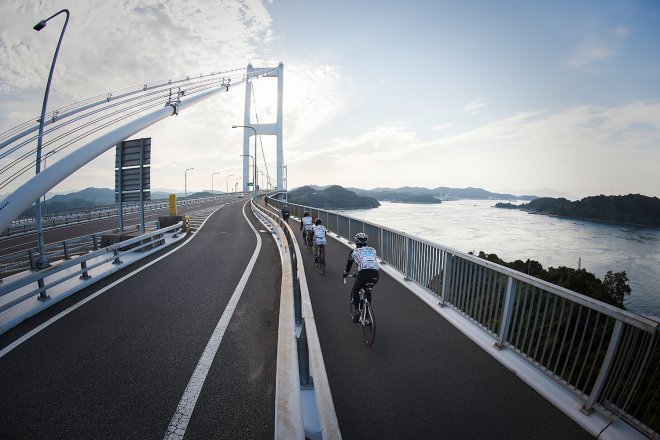
– So you must think of who eats what how and when, and not just about the nutrition they obtain.
Suzuki: Correct! That’s the basic prerequisite we start with.
– You provide support for Ayako Nakai, winner of the women’s elite all Japan U-23 road race. What are the characteristics of bicycle racing from the standpoint of nutrition management?
Suzuki: Among the different types of bicycle competitions, athletes who ride in long distance road races require endurance.
While a low body weight translates into good energy efficiency, muscle power (muscle strength and speed) depends on muscle size, so they need muscles that are thicker to some extent.
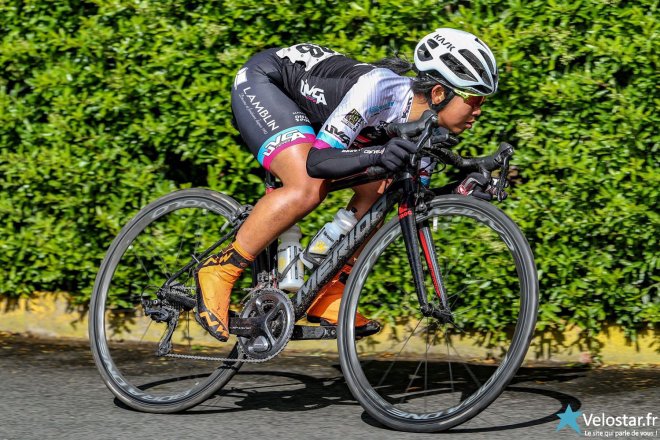
Ayako Nakai
Suzuki: There is no general standard for what is right and wrong, so it is necessary to find the right balance for each athlete. But compared to other sports, bicyclists have higher body fat than athletes in other sports.
– Now that you mention it, it does seem that bicyclists seem to have slightly thicker bodies than marathon runners, another type of long distance athlete.
Suzuki: While the exact mechanism is still not understood, it is believed that some body fat seems to function as a sort of lubricant.
There is fatty tissue between the muscles and the fascia enclosing them, and that fatty tissue acts as a lubricant when the muscles expand and contract. This mechanism is very important for bicycle racing, a sport with a great deal of repetitive movement.
However, if fat is reduced, then so is this lubrication, making it more likely for conditions such as fasciitis or periostitis to occur. Female athletes generally have low body fat, with many having an average of 10%, but many bicyclists have an average of about 20%.
Also, when riding long distances, the headwind tends to cool sweat, and that can cause hypothermia. For that reason as well, it is better to have a certain amount of body fat.
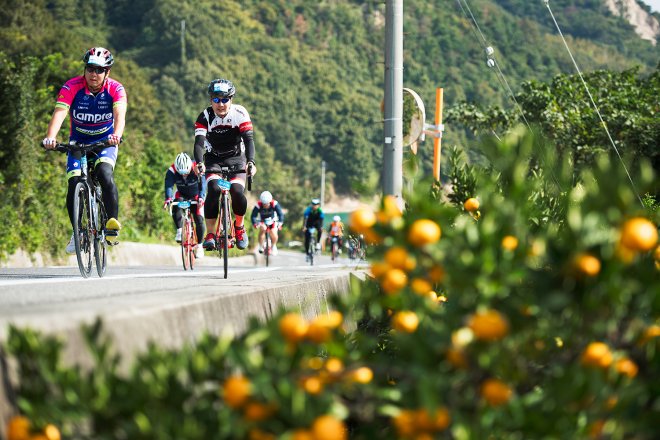
The effects of today’s meal show up four months later!?
– There is a phenomenon called “hunger knock” in long distance cycling in which the body becomes unable to move due to extreme low blood sugar because of the heavy energy consumption over long periods of time. What should you be careful about to avoid it?
Suzuki: Experiencing hunger knock due to excessive riding when you haven’t obtained adequate nutrition is itself proof that the rider does not consider nutrition important. Before you even start riding, the most important thing is self management and eating a balanced diet diet on a regular basis.
It’s much too late to try to manage your nutrition during a race or after you experience the hunger knock.

– I have heard that cyclists with weak stomachs have trouble obtaining nutrients while riding because they’re unable to digest the food.
Suzuki: The digestion process is inhibited in many people during intense exercise, and stress also has a major effect on digestion. Furthermore, resistance to stress and absorption through digestion during exercise differs from person to person.
To be sure, in addition to the normal nutrition management for the athletes I support, we also create a plan before each race that takes many factors into account, including supplementary meals, to prepare them for any contingency during the race.
Basically, sugar is the nutrient that needs to be obtained during long distance rides. For example, we add Isomaltulose to sports drinks so that the athletes blood sugar doesn’t rise too quickly. For athletes who are able to consume solids while riding, we use bananas, sports jellies, breads, and dumplings.
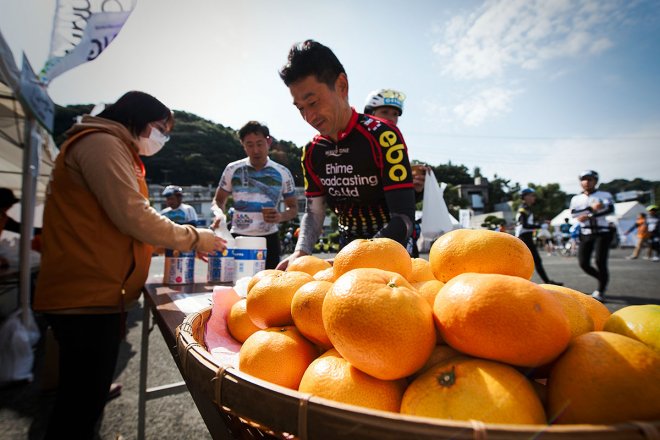
– So nutrients consumed during long rides are purely an emergency measure, and managing nutrition on a regular basis is more important.
Suzuki: Exactly. We have the athletes keep a detailed “athlete’s diary” to record their daily meals and changes in weight, body temperature, and body fat.
Then we combine the diary with race results, such as when they were unable to keep going or when their condition was very good, to analyze the correlation thereof with what they eat.
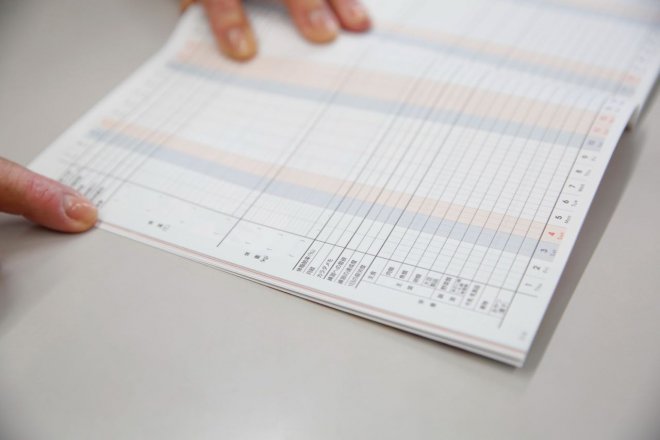
Female Athlete Diary (Japanese Center for Research on Women in Sport)
– In other words, you need to properly understand your body in order to properly manage nutrition.
Suzuki: Yes. But the meal you had just before the race is not the only thing that effects your performance. When something goes wrong, the cause is very often something that you ate four days or even one week before. There are even cases where a meal from two or four months ago cause a problem.
– A meal can affect your cycling after four months!?
Suzuki: For example, if you did not eat properly during a training camp and did not obtain adequate nutrition during that time, the effects can show up in your blood two months later such in way as anemia.
The body needs two types of nutrition: “nutrition to live now” and “nutrition to maintain the body”. When you don’t obtain adequate nutrition, your body tries to adjust effectively so that it can operate with as little nutrition as possible. However, if there is a shortage of the nutrition required to maintain the body, there are chances where some tissues can become damaged.
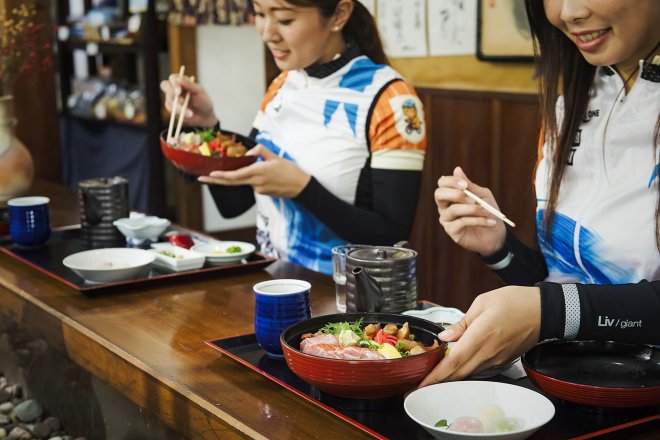
Suzuki: We’ve all experienced the situation where we don’t catch a cold when we’re busy, but get sick the minute we take time off. For illnesses that effect the immune system, the effect of inadequate protein show up several days later. Then the cold symptoms show up some time after that.
In other words, the effects of inadequate nutrition when you are busy shows up several days or several weeks later. The effect on each tissue or function emerges at different times, so while it happens right away for some, it can occurs two months later for others.
– That’s a huge time difference, isn’t it?
Suzuki: That’s why it’s important to eat without destabilizing the balance between nutrition, energy consumed, and your amount of exercise.
Then, ideally, if you are about to compete in a race, you should change the pattern of your daily life to the timing of that race. For example with an early morning race, you can achieve a high level of performance if you start shifting your daily life schedule to that time period from about one week before.
The best food while cycling is Jakoten
– Incidentally, Ehime is home not only to numerous cycling events and races, with destinations such as the Shimanami Kaido, Mount Ishizuchi, and Cape Sada, but there is also plenty of delicious local cuisine. Are there any local Ehime foods you recommend for cyclists?
Suzuki: I actually have a friend who lives in Ehime, and I go there almost every year, and I always make sure to visit the Ohisama market (Ohisama Ichi) where you can purchase locally harvested crops by the farmers in Matsuyama.
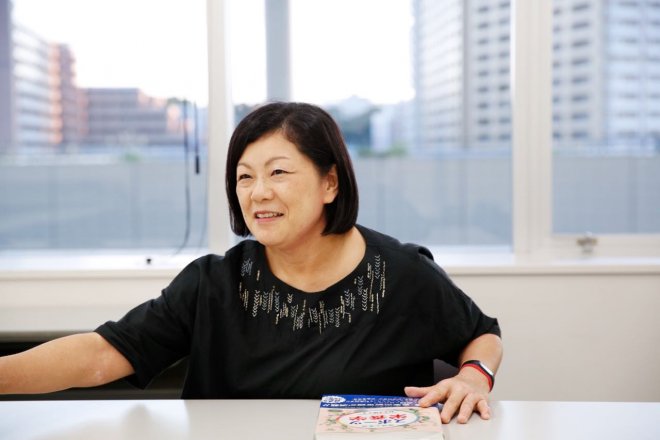
– Quite deep love for Ehime you have! (laughs)
Suzuki: The first Ehime food I recommend is Tachimaki. Tachimaki is grilled largehead hairtail fish (Tachiou) wrapped around a bamboo stick. In nutritional terms, it is low in fat but high in protein, making it unlikely to give you stomach or intestinal problems, so I recommend it for your meal the day before you go cycling. But you have to be careful, because when you eat tachimaki, it’s very hard to resist having a beer along with it.
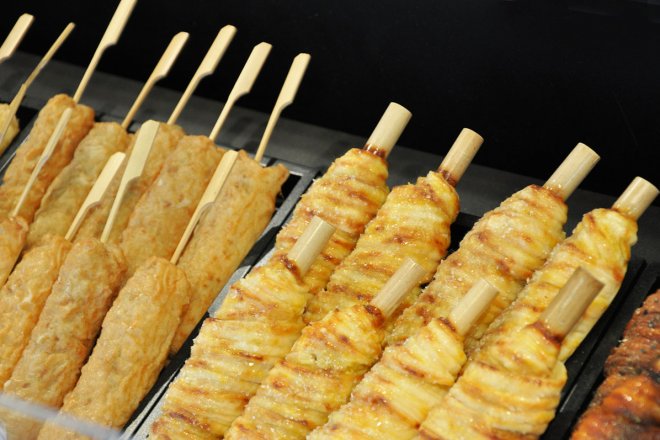
Tachimaki
– (Laugh). Does that mean that you should avoid alcohol?
Suzuki: Consuming alcohol puts a burden on your liver. The fact is that you are already putting a heavy burden on your liver when you engage in athletic activities. When you try to achieve something as in a race, it is better to avoid drinking alcohol.
Next, the ideal snack for breaktime during a leisurely ride is Jakoten (fried fish cakes). It’s an easy way to get protein and is high in sodium, so if you eat it with a drink of water, you can replace the salts you lost while sweating. The flavor of jakoten differs from shop to shop, so you can have fun searching for your favorite.
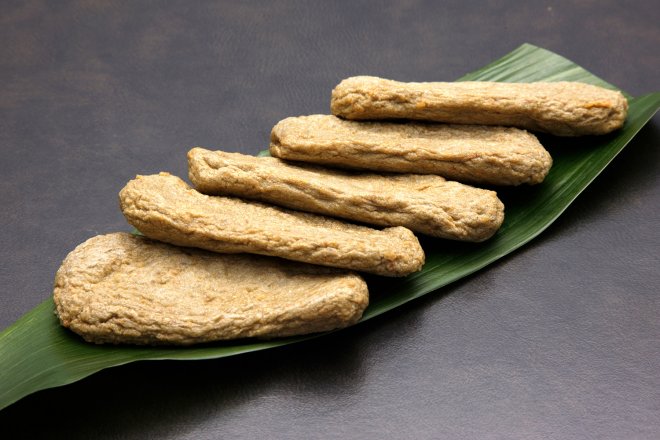
Jakoten
I also recommend the local citrus fruits, such as mandarin orange, for just after exercising. They provide vitamin C, citric acid, fructose, and dietary fiber, so they help in resupplying the glycogen that exercise depletes from your muscles.
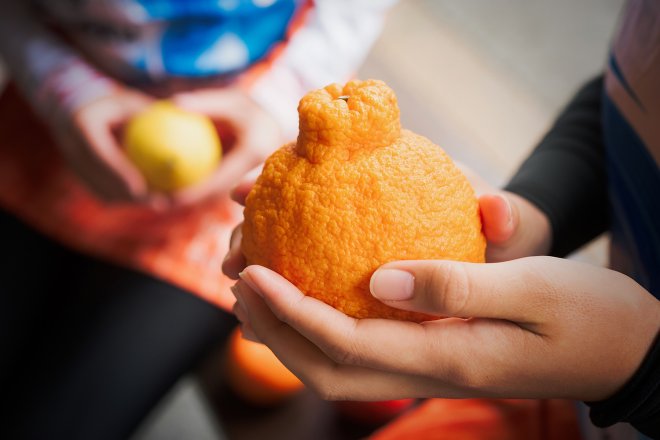
Ehime mandarin orange
– What are some foods you should avoid before cycling?
Suzuki: Watch out for dishes, such as Senzanki (a local fried chicken dish), that use oil. Fats take time to digest, so they are not appropriate for meals before exercising. If you want to try senzanki, do so after exercising instead.
Also, while Ehime is famous for its Taimeshi (sea bream on rice) cooked in the Chazuke style (green tea over rice), many people gobble it up without chewing very much because it’s soft and easy to swallow. But doing so makes digestion harder, so this is another food you should eat after exercising.
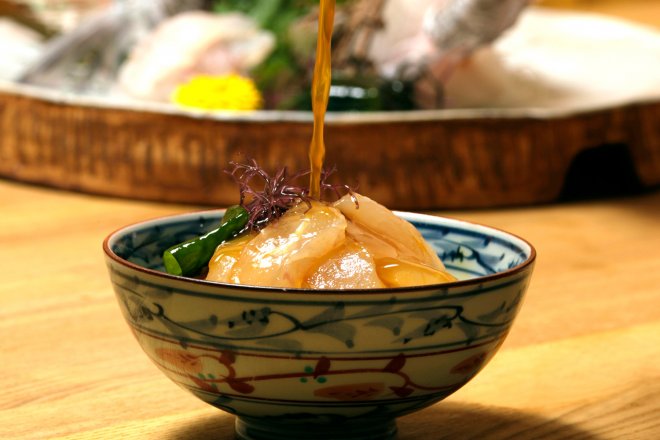
Taimeshi
– That sounds like the ideal Ehime cycling tour: eat Tachiou (largehead hairtail) before starting, Jakoten on your breaks, a mandarin orange when you’re done, then have a dinner of Senzanki to celebrate, and top it off with sea bream Chazuke.
Suzuki: There are many delicious foods in Ehime. I hope you enjoy your cycling trip in Ehime with a balanced diet of Ehime foods.
PROFILE
Shihoko Suzuki
Shihoko Suzuki is a professor of nutrition in the Department of Health and Human Services at the Kanagawa University of Human Services. She is also the Chairperson of the Sports Nutrition and Dietitian Association, Japan. She is an accredited sports nutritionist. She attended the graduate school of Jissen Women’s University after graduating from the undergraduate program there. After studying as a trainee at the National Institute of Health & Nutrition, she completed the Course of Advanced Medical Science at the School of Medicine, Tokai University Graduate School. She provides nutritional support and guidance for numerous groups of athletes, both top and rising athletes, including the all Japan women’s softball team (until September 2008), the Mazda Motor track & field team, the Japan men’s wheelchair basketball team, and the baseball team of the Yokosuka Sogo High School. Her publications include Theory and Practice in Sports Nutrition and Learning Sports Nutrition from the Basics.
Articles you might like
Related Routes & Destinations
We use cookies on this site to enhance your user experience. If you continue to browse, you accept the use of cookies on our site. See our cookies policy for more information.





